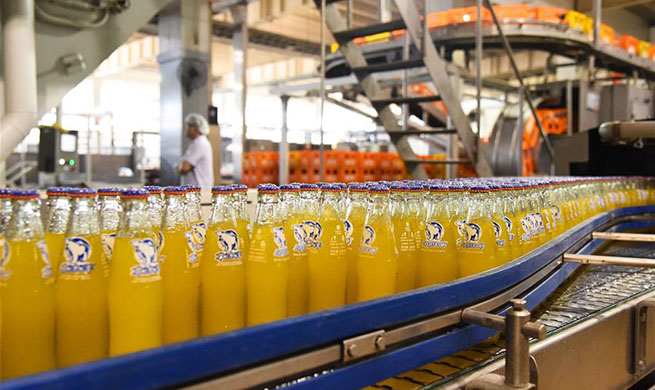SYDNEY, July 8 (Xinhua) -- Researchers from the Australian Centre for Robotic Vision (ACRV) in the state of Queensland are using the concepts of evolution and survival of the fittest to tailor snake-like surgical robots directly to patient's anatomies, ACRV chief investigator Jonathan Roberts told Xinhua on Monday.
The groundbreaking project is the brainchild of ACRV PhD researcher Andrew Razjigaev who designed the first SnakeBot surgical unit for conducting knee arthroscopies, which he presented last year.
The SnakeBot prototype comprises three mechanical arms for providing dexterity and vision to surgeons as they operate on the inside of a patient's knee.
Now, using an "evolution" based algorithm, Razjigaev and his team are working on optimising the unit by running computer simulations to determine which tools fit patients best.
The algorithm works by reviewing a 3D image of the patient's knee, taken using a CT scanner or MRI, and then trying different iterations of the tools by a process which Roberts describes as "survival of the fittest."
"We put in a kind of rough guess of a tool that we think might work and we make a few variations of this at the start and then we kind of run the simulation and see of those which ones work the best," Roberts said.
"The algorithm then creates a next generation using sort of an evolution concept -- it kills off the worst ones, it keeps some of the best ones, it randomly mutates some of the designs of the best ones, tweaks a thing randomly here and there -- it merges bits of some of the good ones, so it's like making and creating children."
Operators can then create 3D printed and disposable tools which can be remotely controlled and fit perfectly inside each individual patient.
While the technology is still in the very early stages of development and yet to be trialled on a patient, the team is optimistic that their research could have a huge impact, with the possibility of adapting it for other surgery types as well.
"Because we now have 3D printing and we have relatively affordable ways of making custom tools, then the idea of using evolutionary algorithms to design those tools is now very plausible for all sorts of different types of surgery," Roberts said.













